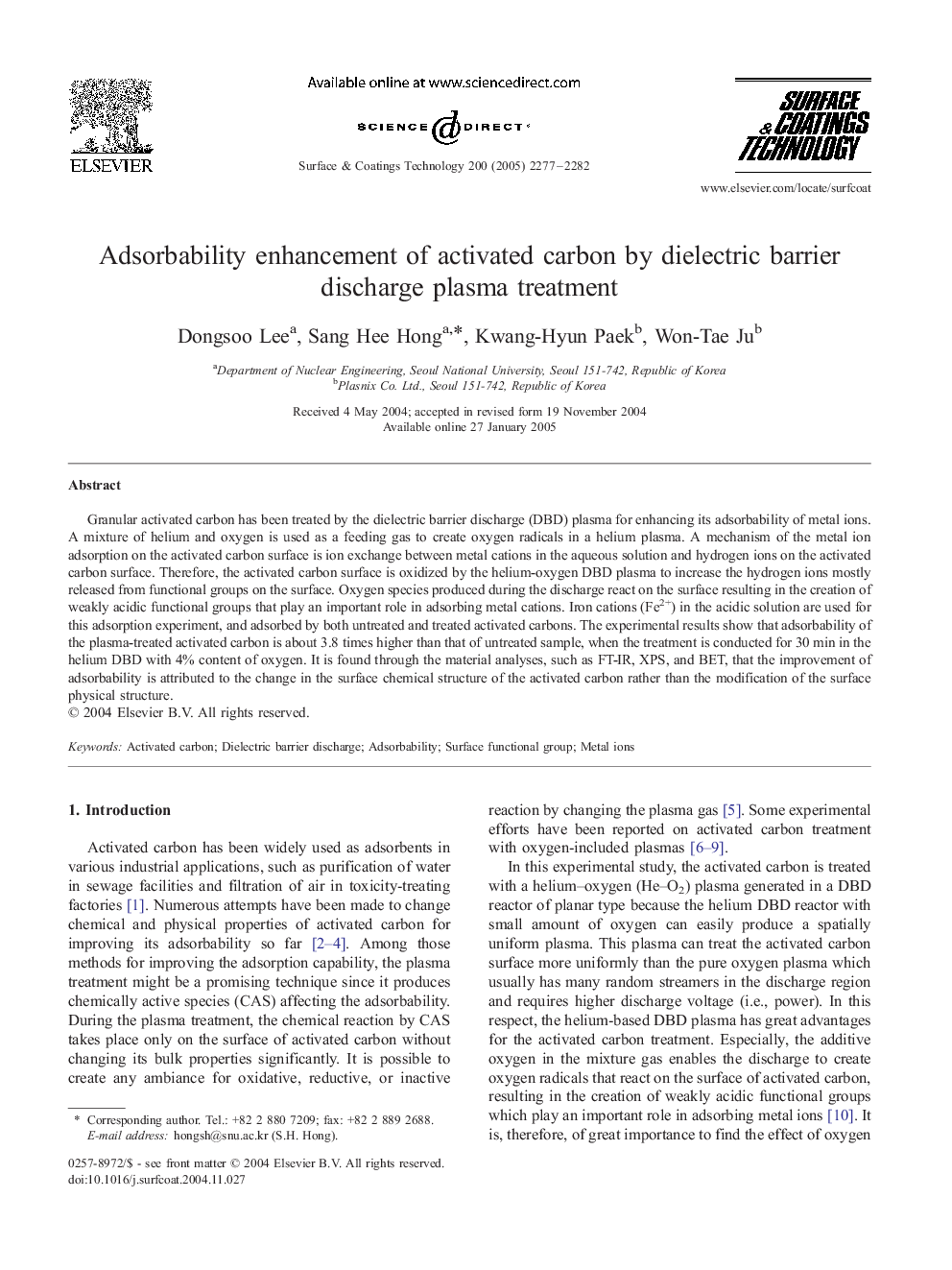| Article ID | Journal | Published Year | Pages | File Type |
|---|---|---|---|---|
| 1663442 | Surface and Coatings Technology | 2005 | 6 Pages |
Granular activated carbon has been treated by the dielectric barrier discharge (DBD) plasma for enhancing its adsorbability of metal ions. A mixture of helium and oxygen is used as a feeding gas to create oxygen radicals in a helium plasma. A mechanism of the metal ion adsorption on the activated carbon surface is ion exchange between metal cations in the aqueous solution and hydrogen ions on the activated carbon surface. Therefore, the activated carbon surface is oxidized by the helium-oxygen DBD plasma to increase the hydrogen ions mostly released from functional groups on the surface. Oxygen species produced during the discharge react on the surface resulting in the creation of weakly acidic functional groups that play an important role in adsorbing metal cations. Iron cations (Fe2+) in the acidic solution are used for this adsorption experiment, and adsorbed by both untreated and treated activated carbons. The experimental results show that adsorbability of the plasma-treated activated carbon is about 3.8 times higher than that of untreated sample, when the treatment is conducted for 30 min in the helium DBD with 4% content of oxygen. It is found through the material analyses, such as FT-IR, XPS, and BET, that the improvement of adsorbability is attributed to the change in the surface chemical structure of the activated carbon rather than the modification of the surface physical structure.
